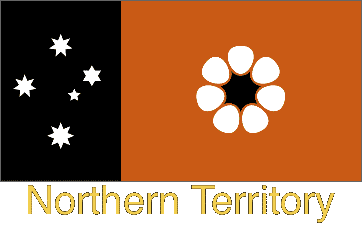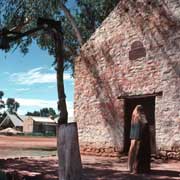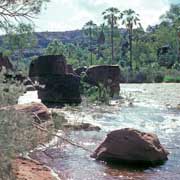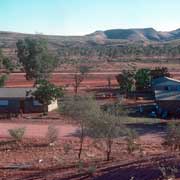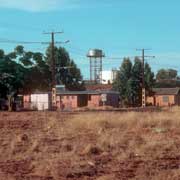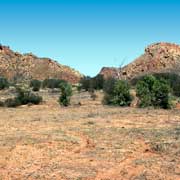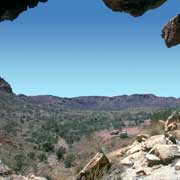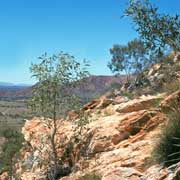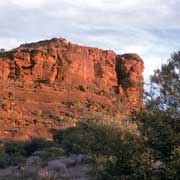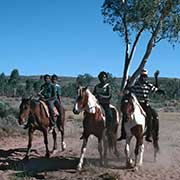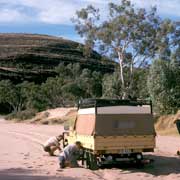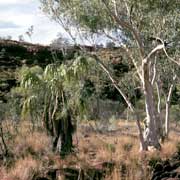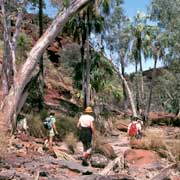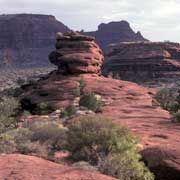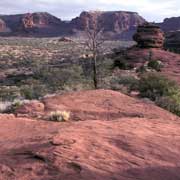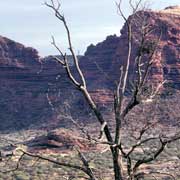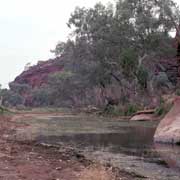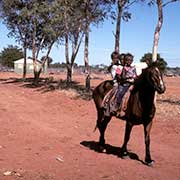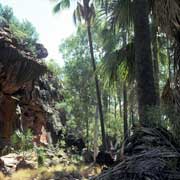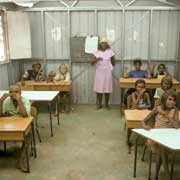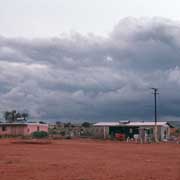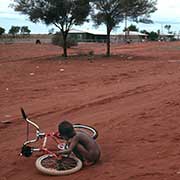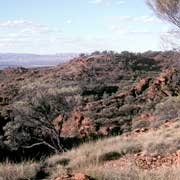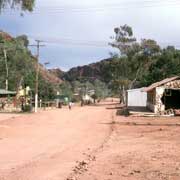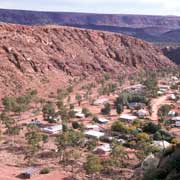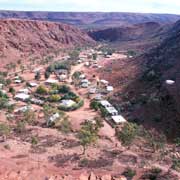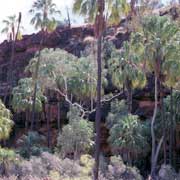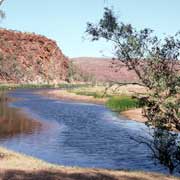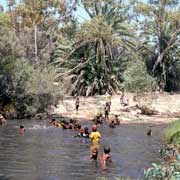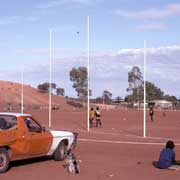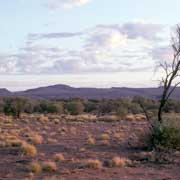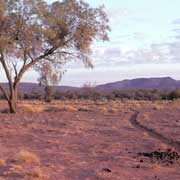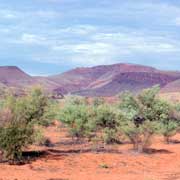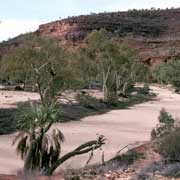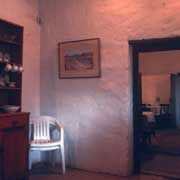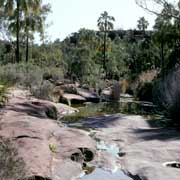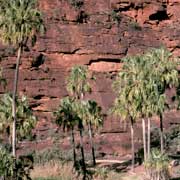Photos of the Hermannsburg Region of Central Australia
Hermannsburg Region of Central Australia
In 1877 German Lutheran missionaries Kempe and Schwartz established a mission station around Koprilya permanent waterhole, about 127 kilometres west of Alice Springs and named it Hermannsburg, after the town in northern Germany from where they came. They had travelled from Adelaide with a herd of cattle and thousands of sheep for 18 months (having been trapped by drought at a spring on the way) after the explorer Ernest Giles had been there in 1872; he was amazed at the palms in what is now called Palm Valley and had briefed the Lutheran Church. In spite of opposition of white settlers who chased the local people of their land and could shoot them with impunity, they built a church and proceeded to evangelise the local Arrarnta (or Aranda) people, translating the bible in their language.
you may then send it as a postcard if you wish.
In 1877 Hermannsburg was the first town in central Australia and at one stage had as many as 700 Western Arrarnta inhabitants. Although the missionaries discouraged traditional ceremonies, traditional culture remained strong and it still is. The Strehlow family collected traditional objects that have become the centre of controversy as many objects still have deep ceremonial significance.
In 1982 the Lutheran Church handed control back to the traditional Western Arrarnta owners and the community, now called Ntaria, is since run by its own council. The mission buildings have largely been restored and visitors are welcome to explore. The old church is still there and a tea room has been established in the old mission building where visitors may take tea and homemade scones. Many residents have however left the old mission to establish Homeland Centres or outstations on their traditional clan countries. There are around 35 of these small communities, some with their own schools. The family of the famous Aboriginal painter Albert Namatjira, whose inspiration was the landscapes around Hermannsburg, still lives here and a collection of his paintings can be seen in the mission building.
Eighteen kilometres south of Hermannsburg, along a sandy track that mostly follows the dry riverbed of the Finke River, is Palm Valley, that had impressed Ernest Giles back in 1872 and still does the same to present day visitors. The valley is actually a narrow gorge with stands of red cabbage palms (Livistona mariae), some reaching as high as 25 metres. This species is unique to this area and found nowhere else. The gorge has over 300 plant species and is a true oasis in this otherwise dry land. On the way to Palm Valley one comes through the Amphitheatre, also called Kalarranga, a group of red sandstone formations in an impressive setting, especially striking after sunrise and in late afternoon.
Since the Lutheran Church handed control of Hermannsburg back to the traditional Western Arrarnta owners in 1982, many residents have since left the old mission to establish Homeland Centres or outstations on their traditional clan lands. There are around 35 of these small communities, some with their own school. Traditional life is still strong here, although there are now modern houses, solar-powered telephones and there are plenty of four-wheel drives to go hunting in.
Little Palm Creek is an example of a stand of Red Cabbage Palms near Hermannsburg and a great place to hike into. It is another branch of the Finke River and it is possible to drive (four wheel drive only, of course) north from here to Glen Helen, following the dry riverbed, but as it is usually very soft sand it is easy to get bogged here, so don't try this on your own: there won't be much traffic here. Another similar trip would be to Boggy Hole, about 30 kilometres south of Hermannsburg, along a rough sandy track, passing Junction Waterhole where Ellery Creek flows into the Finke River. Following Finke Gorge, Boggy Hole is reached about 8 kilometres further on. It is a permanent waterhole and has many waterbirds, including pelicans and swans. In the 1880s there was a police camp here from where a constable called William Willshire mounted punitive expeditions with his Aboriginal trackers and troopers, shooting Aboriginal people who resisted being driven off their lands by white settlers. The missionaries at Hermannsburg campaigned against this and eventually Willshire was put on trial, but, as was usual in those days, acquitted.
About 55 kilometres west of Hermannsburg is Gosse Bluff, an ancient impact crater. It was created 140 million years ago when a meteor crashed here. The outer crater rim has a diameter of 22 kilometres and has eroded away and is barely visible today. The inner ring of 250 metre high hills has a diameter of about 5 kilometres. To the Western Arrarnta people, the place is known as Tnorala, and represents a wooden dish that fell from the sky in the "Dreamtime". The traditional owners live at Ipolera, a small community belonging to the Malbunka family 12 kilometres off the Larapinta Drive to the south. Further along Larapinta Drive and about 90 kilometres by road from Hermannsburg, is Areyonga, a small Aboriginal community in a spectacular location, nestled between towering hills.
